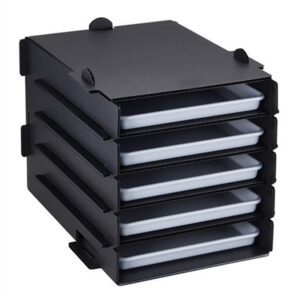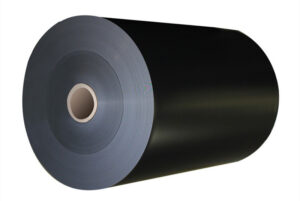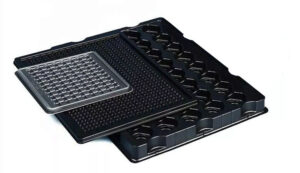Application Fields Of Conductive PP Compound
Conductive PP has the characteristics of high impact resistance, thermal stability, injection molding, extrusion molding, antistatic, conductive, homopolymer, and copolymer.
Application of conductive PP in electrical and electronic fields
- Insulation layer of wires and cables: In some wires and cables with specific requirements for conductivity, conductive PP compounds can be used to manufacture insulation layers, that not only ensure good insulation effects but also achieve certain conductive functions, such as in special wires and cables that need signal transmission or grounding.
- Housings and internal components of electronic devices: For housings of electronic devices such as mobile phones, computers, and televisions, conductive PP compounds can effectively prevent static electricity accumulation and prevent static electricity from damaging electronic components. At the same time, some internal components, such as connectors and gaskets, may also use conductive PP compounds to ensure the normal operation of the equipment and the stability of signal transmission.

Application of conductive PP in the automotive industry
- Auto parts: Conductive PP compounds are used in some auto parts, such as dashboards, bumpers, interior trims, etc. On the one hand, it can meet the requirements of electrostatic protection during driving and reduce the hazards of static electricity, such as avoiding the danger of fuel leakage caused by sparks caused by static electricity; on the other hand, it can also provide conductive connection and signal transmission functions for the application of some electronic equipment in automobiles, such as automotive sensors, controllers and other components.
- Car charging piles: The outer shell and some internal structural parts of new energy car charging piles may also use PP conductive materials. Its function is to ensure the stability and safety of the charging pile during use. For example, it can effectively conduct and evacuate the static electricity generated by the charging pile during operation, and prevent the accumulation of static electricity from affecting the normal operation of the charging pile and the safety of users; at the same time, it also has a certain anti-electromagnetic interference ability to ensure the stable transmission of signals during charging and improve charging efficiency and reliability.
Application of conductive PP in the packaging industry
- Anti-static packaging materials: used to package electronic components, integrated circuits, precision instruments, and other products that are sensitive to static electricity. Packaging materials made of conductive PP composite materials can conduct the static electricity generated inside the packaging in time to prevent static electricity from damaging sensitive electronic equipment, such as preventing static electricity from causing damage to electronic chips or performance degradation.
- Conductive film: It can be used in some occasions that require conductive and packaging functions, such as pharmaceutical packaging, food packaging, etc. In these fields, conductive films can not only play an anti-static role but also meet certain special requirements for packaging contents, such as used in some packaging processes that require static adsorption or static monitoring.

Application of conductive PP in the industrial field
- Anti-static conveyor belt: It is used to transport various items on the production line of the factory. The conveyor belt made of conductive PP compound can effectively eliminate the static electricity generated by the friction between the conveyor belt and the items, prevent the accumulation of static electricity from causing fire or explosion and other safety accidents, and ensure the stability of the items during the transportation process, and avoid the impact of static electricity on product quality. For example, it is widely used in production lines in electronics manufacturing, chemical, pharmaceutical, and other industries.
- Conductive pipes and plates: They can be used in some industrial pipeline systems and building structures that require conductive properties. For example, in some chemical pipelines and oil and gas pipelines that need to prevent static electricity accumulation, conductive pipes can conduct static electricity in time to ensure production safety; conductive plates can be used for the ground and walls of workplaces that need anti-static, such as electronic workshops, operating rooms, etc.
- Industrial brushes and cleaning tools: For example, some brushes are used to clean electronic equipment and precision instruments, conductive PP composites can avoid static electricity during the cleaning process, prevent static electricity from damaging the equipment, and improve the cleaning effect and efficiency.

Application of conductive PP in other fields
- Electromagnetic shielding materials: used to make materials that can block or reduce electromagnetic wave interference. For example, in some places that are sensitive to electromagnetic signals, such as laboratories and nuclear magnetic resonance rooms in hospitals, electromagnetic shielding materials made of PP conductive materials can effectively shield external electromagnetic interference and ensure the normal operation of the equipment and the accuracy of the test results.
- Sports equipment: Conductive PP composites are also used in some sports equipment, such as sportswear and sports shoes with special functions. For example, some sportswear uses conductive materials to monitor human physiological signals, such as heart rate, body temperature, etc.; in sporting shoes, conductive materials may be used to achieve some special functions, such as enhancing the anti-slip performance of the sole or providing connection functions with electronic devices.
- Medical equipment: It is used in some medical equipment and instruments, such as conductive medical catheters, surgical instruments, etc. Conductive PP composites can ensure the safety and effectiveness of these devices during use, prevent static electricity from causing harm to patients, and may also provide support for the special functions of some medical equipment, such as in some instruments that require electrical stimulation treatment.




